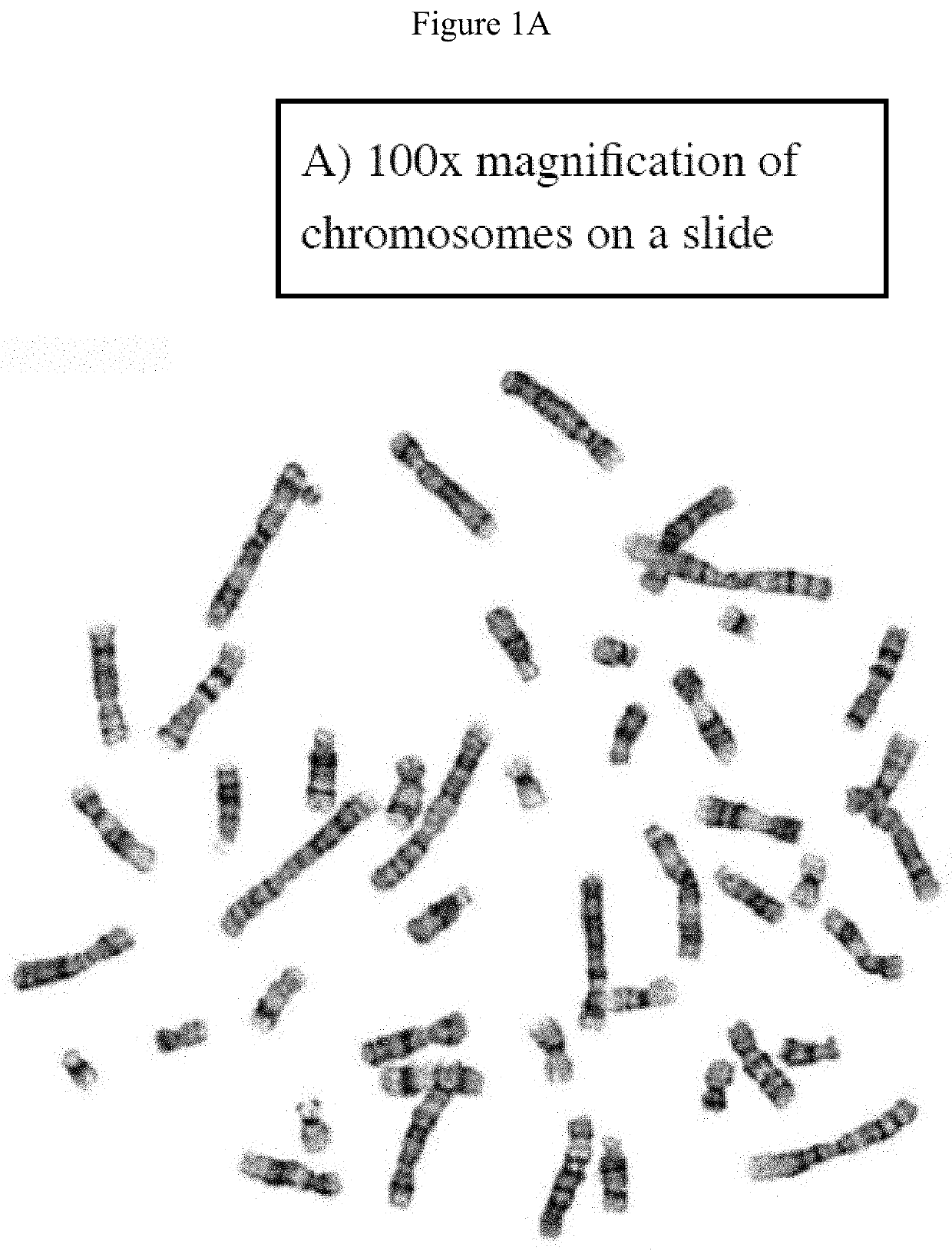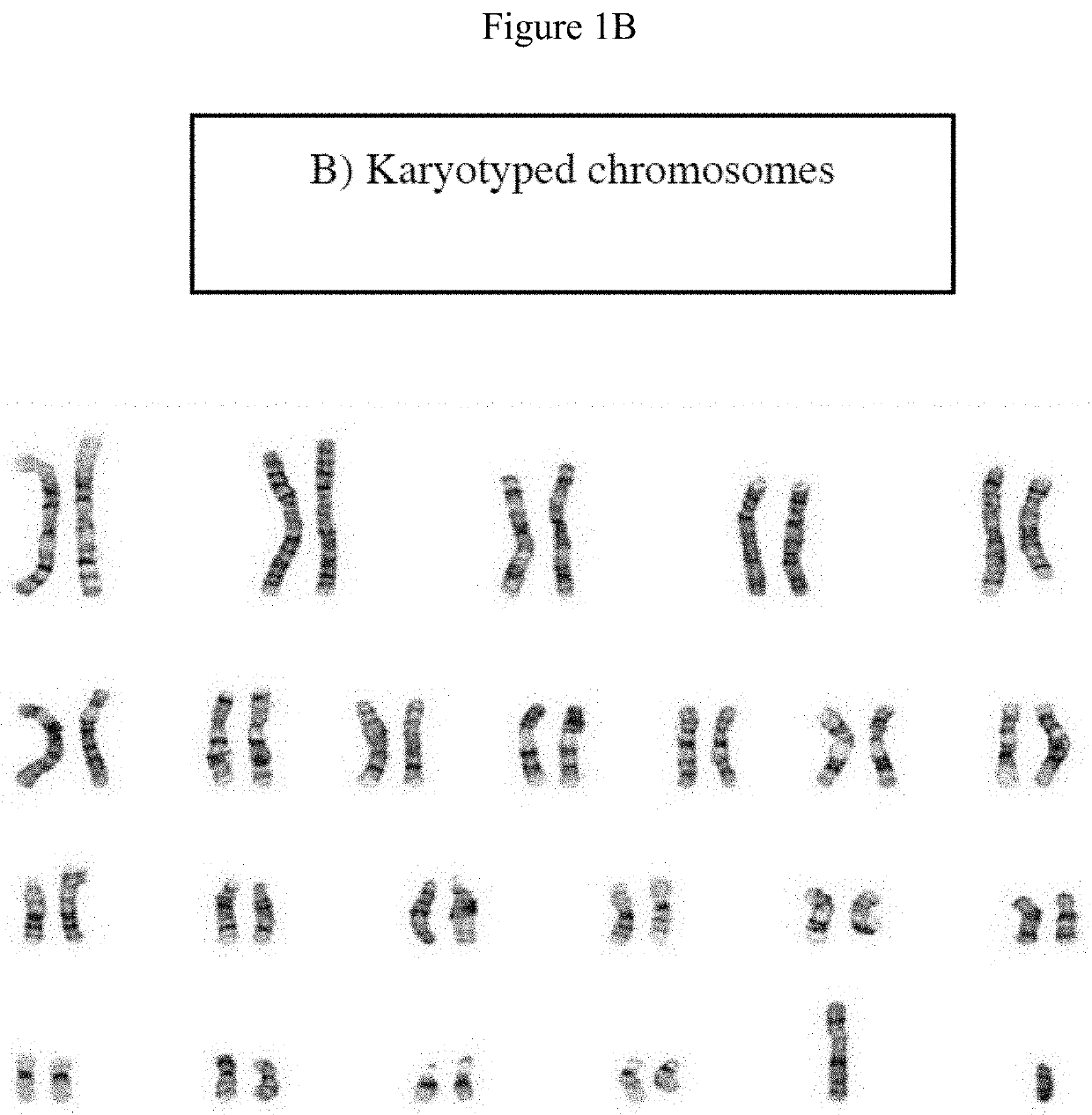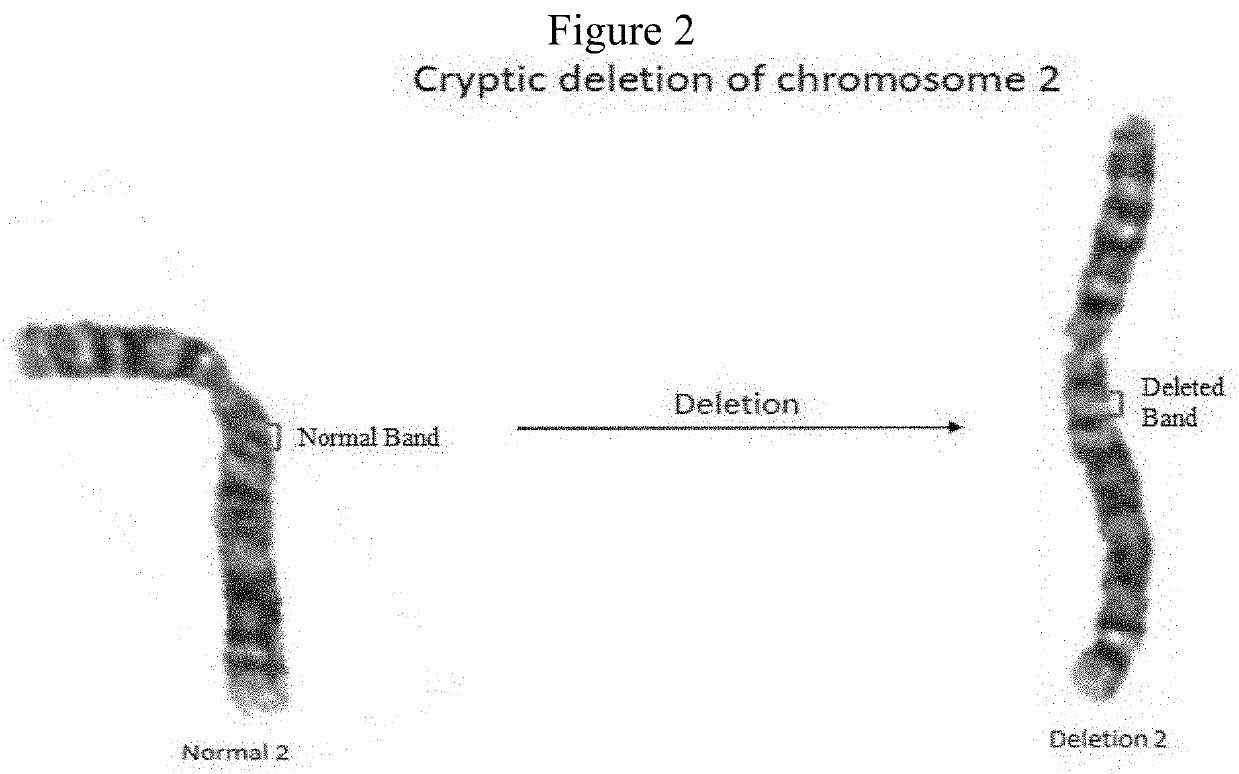Chromosomal enhancement and automatic detection of chromosomal abnormalities using chromosomal ideograms
a technology of chromosomal ideograms and enhancement, which is applied in the field of chromosomal enhancement and automatic detection of chromosomal abnormalities using chromosomal ideograms, can solve the problems of difficult detection and often missed chromosomal abnormalities, and achieve accurate and sensitive abnormalities identification and easy analysis
- Summary
- Abstract
- Description
- Claims
- Application Information
AI Technical Summary
Benefits of technology
Problems solved by technology
Method used
Image
Examples
examples
[0118]The following graphic examples of certain embodiments of the system or methods disclosed herein are described by FIGS. 18 (Process 1), 19 (Process 2) and 20 (Process 3).
[0119]In Process 1, an image of stained chromosomes is produced (first panel), which is further clarified using conventional enhancement, such as decreasing background and increasing contrast (panel 2). Panel 3 shows the subsequent generation of a karyogram, which in panel 4 are separated into pairs of single chromosomal images. Process 1 describes a conventional process of producing a karyogram.
[0120]Process 2 describes inputting chromosomal images into a trained Cycle-GAN model, which outputs ideograms; or when given an ideogram, outputs chromosomal images. This process which is disclosed herein facilitates the identification of chromosomal abnormalities that are undetectable or difficult to accurately detect by conventional methods. The output of process 2, option 2, is used as a single chromosome.
[0121]Proc...
PUM
 Login to View More
Login to View More Abstract
Description
Claims
Application Information
 Login to View More
Login to View More - R&D
- Intellectual Property
- Life Sciences
- Materials
- Tech Scout
- Unparalleled Data Quality
- Higher Quality Content
- 60% Fewer Hallucinations
Browse by: Latest US Patents, China's latest patents, Technical Efficacy Thesaurus, Application Domain, Technology Topic, Popular Technical Reports.
© 2025 PatSnap. All rights reserved.Legal|Privacy policy|Modern Slavery Act Transparency Statement|Sitemap|About US| Contact US: help@patsnap.com



